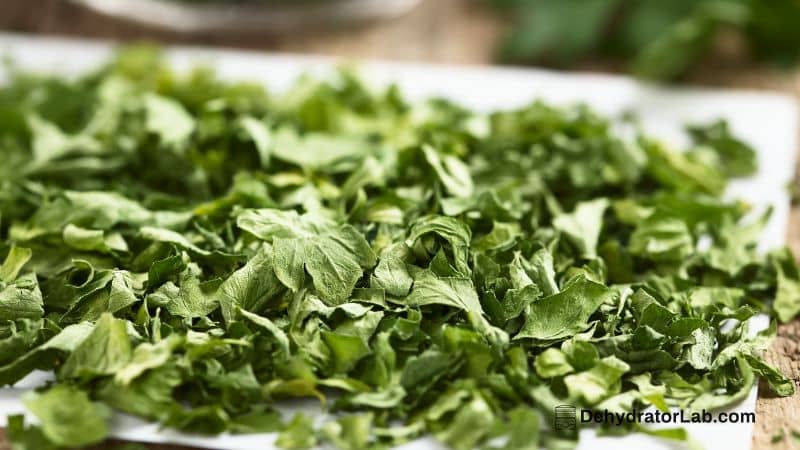We will delve into making your very own fruit roll-ups, also known as fruit leather. This delicious, healthy snack is simple to make and great for making the most of seasonal produce.
Below you can find our guide on how to make fruit leather in a dehydrator in just 8 easy steps. Let’s go!

As an Amazon Associate, I earn from qualifying purchases. If you make a purchase after clicking on a link I may earn a small commission at no extra cost to you if items are purchased.
In this article:
TL;DR (Too Long; Didn’t Read): Key Takeaways
- 🍑 Fruit roll-ups are a great way to use ripe or overripe fruit that may not be suitable for other recipes like jelly making.
- 🍎 Adding applesauce to the blended fruit mixture helps to prevent browning and adds flavor to the fruit roll-ups.
- 🍯 Liquid sweeteners like honey or agave nectar are recommended for making fruit roll-ups to keep them soft and chewy, while powdered or crystal sweeteners can make them hard and brittle.
- 🍎 Using apple juice concentrate in fruit leather not only adds moisture and makes it blend easier, but also adds sweetness to the final product.
- 🍓 The amount of sweetener needed in fruit leather varies depending on the tartness of the fruit, so it’s important to taste and adjust accordingly.
- 🍓 Fruit leather should be dehydrated until it is leathery and pliable, not crispy or crunchy, for the best texture.
- 🧑🍳 Taste testers found the fruit leather to be delicious, healthy, and a good snack option.
How To Make Fruit Leather In a Dehydrator: The Process
Step 1: Procure Your Fruit
On my recent trip to the farmers market, I managed to score a box of peaches at a great bargain. Whether you’re shopping at the market or grocery store, don’t hesitate to ask about the farming practices used to cultivate your fruits and vegetables. It’s important to ensure they’re safe and healthy.
When choosing your fruit, don’t worry about the aesthetics. The best deals are often found in seconds or bruised fruits, which are perfect for making fruit roll-ups. The key is to get ripe, or even overripe, fruit.
Step 2: Prepare Your Dehydrator Trays
Next, you’ll need to prepare your dehydrator trays. I use a Nesco professional dehydrator, but the process will be similar no matter your appliance. Make sure to lightly spray your trays with oil, as this is crucial to avoid the fruit leather sticking to the trays.
If you’re using an oven instead of a dehydrator, you can use a regular sheet pan lined with parchment paper and sprayed with oil.
Step 3: Blend Your Fruit
The next step involves blending your fruit. For every half blender-full of fruit, you’ll make one roll-up. This recipe works with a wide range of traditional fruits such as peaches, apricots, cherries, raspberries, blueberries, bananas, and pineapples.
Avoid citrus fruits like oranges, lemons, and limes. They aren’t the best fit for this recipe.
For each roll-up, I add half a cup of applesauce to the blended fruit. If your chosen fruit is likely to turn brown after cutting (like apples), it’s a good idea to add an acid like lemon juice to keep it fresh-looking.
Step 4: Sweeten If Desired
Feel free to add a liquid sweetener to the mix. Be mindful, however, that the type of sweetener you use can affect the texture of your fruit roll-ups. Liquid sweeteners such as honey or agave nectar will keep them soft and chewy, while crystallized or powdered sweeteners can make them hard and brittle.
If your fruit is particularly tart, consider using apple juice concentrate, which also helps to blend the fruit more easily.
Step 5: Blend, Taste, Repeat
Once you’ve blended your fruit and added any sweeteners or extras, it’s time for a taste test. If it tastes good, go with it! If it needs a bit more sweetener, add a little more.
Remember, there’s no definitive recipe for the perfect fruit roll-up. It’s a matter of taste and personal preference.
Step 6: Spread the Mixture
The blended fruit should have a consistency similar to a thick smoothie. Pour it onto your prepared trays, spreading it evenly with a spoon. If you have fruit roll-up trays, they’re perfect for this, with a lip on the inside and outside edges to keep everything in place.
Step 7: Dehydrate
Stack the filled trays into your dehydrator, and set it to 135 degrees (if you don’t have one yet have a look at our dehydrator reviews). Let them dehydrate until the fruit mixture is leathery and pliable. This process can take several hours or even overnight.
The fruit leather is done when it feels smooth and non-sticky to the touch and peels off easily from the tray.
Step 8: Cut and Serve
Once cooled, remove the fruit leather from the tray. Using food scissors, cut the large piece into eighths or the desired size. They should look like pie-shaped wedges, but feel free to cut them into any size you prefer.
Further Tips and Variations for Making Fruit Leather
Making fruit leather, or fruit roll-ups, is a fun and creative way to utilize ripe fruit. Here, we’re going to extend the discussion, offering more tips and variations to ensure you master the art of fruit leather creation.
Optimal Fruits for Fruit Leather
While you can use a broad variety of fruits, some fruits naturally lend themselves to the fruit leather-making process. Here are some favorites:
- Berries: Raspberries, blackberries, and blueberries make delicious and nutrient-dense roll-ups.
- Stone Fruits: Peaches, plums, and apricots give a sweet and tangy taste.
- Apples and Pears: These everyday fruits are great for roll-ups. Just remember to add lemon juice to prevent browning.
Combining Fruits
Combining different types of fruits can lead to unique and tasty results. For example, strawberry-banana or apple-pear combinations can add a special twist to your fruit roll-ups.
Adding Extra Flavors
You can experiment with adding extra flavor to your fruit leather. Consider sprinkling in spices such as cinnamon or nutmeg, especially when using apples or pears. Vanilla extract can also add a sweet aroma and depth of flavor.
Using Sweeteners
The choice of sweetener can greatly influence the taste of your fruit leather. Here are some options:
- Honey: Offers a mild, natural sweetness.
- Agave Nectar: A vegan-friendly alternative to honey, it’s also quite sweet.
- Apple Juice Concentrate: Adds sweetness and can assist in blending the fruit.
Remember, the key is to maintain a balance between the sweetness of the fruit and the sweetener.
Storing Your Fruit Leather
Proper storage is essential to maintaining the quality of your fruit roll-ups. Once cooled and cut, roll them up in wax paper and store them in an airtight container.
They can be kept at room temperature for about a week or can be stored in the refrigerator for longer shelf life.
A Nutritious Snack
Fruit leathers are not only a fun and tasty snack but are also loaded with nutritional value. They’re a great source of vitamins, minerals, and fiber inherent in the fruits used.
Frequently Asked Questions
How long does it take to dehydrate fruit leather in a dehydrator?
The dehydration process for fruit leather can take between 4 to 12 hours, depending on the type of fruit used, its water content, and the temperature of the dehydrator.
How do you make fruit leather trays on a dehydrator?
To prepare the trays for fruit leather, spray them with oil to prevent sticking. Pour the fruit blend onto the tray, spreading it evenly with a spoon. The trays have a lip on the inside and outside edges to prevent any spillage.
How do you make vegetable leather in a dehydrator?
Making vegetable leather is similar to fruit leather, but it involves cooking the vegetables first. Puree cooked vegetables, add spices as desired, spread on the dehydrator tray, and dehydrate at 135 degrees until they are pliable and non-sticky.
How long does dehydrated fruit leather last?
Dehydrated fruit leather can last up to 1 month at room temperature. However, you can extend its shelf life by storing it in the refrigerator or freezer, where it can last for up to a year.
Can I add spices or flavorings to my fruit leather?
Yes, you can add spices like cinnamon or nutmeg, or even vanilla extract, to your fruit puree before dehydrating it. This can enhance the flavor of the fruit leather.
Can I use citrus fruits to make fruit leather?
Citrus fruits are generally not recommended for making fruit leather because of their high acidity and low pulp content.
Conclusion
Making your fruit leather can be a delightful and rewarding process. It’s an excellent way to make good use of ripe or overripe fruit, reducing waste while creating a snack that’s both delicious and healthy. Whether you stick with a tried-and-true recipe or experiment with different fruits and flavors, you’re sure to find a combination that’s just right for you.
With this simple guide, you’re well on your way to creating tasty fruit roll-ups with any ripe fruit you have. Enjoy your homemade fruit roll-ups! Happy dehydrating!



